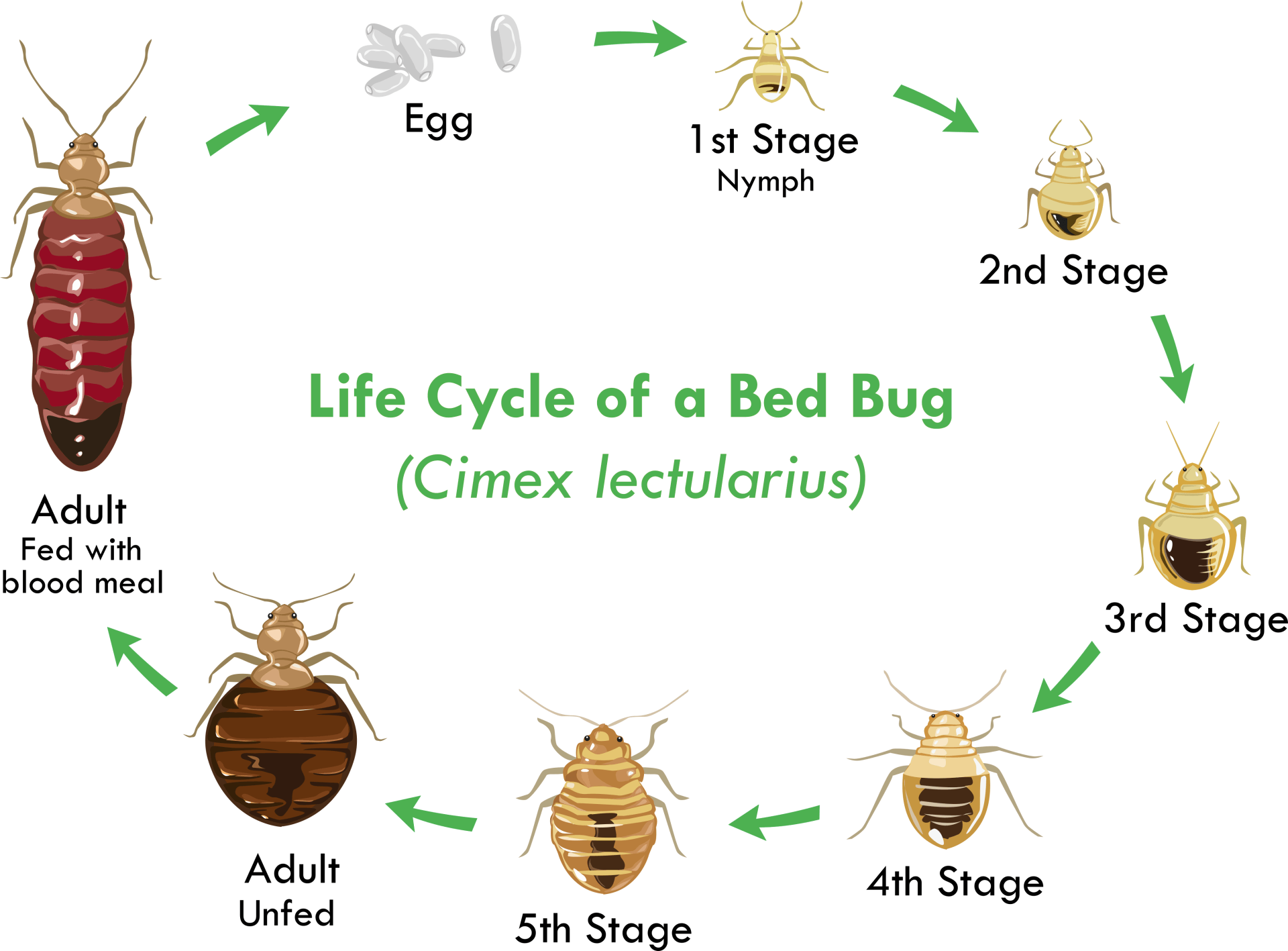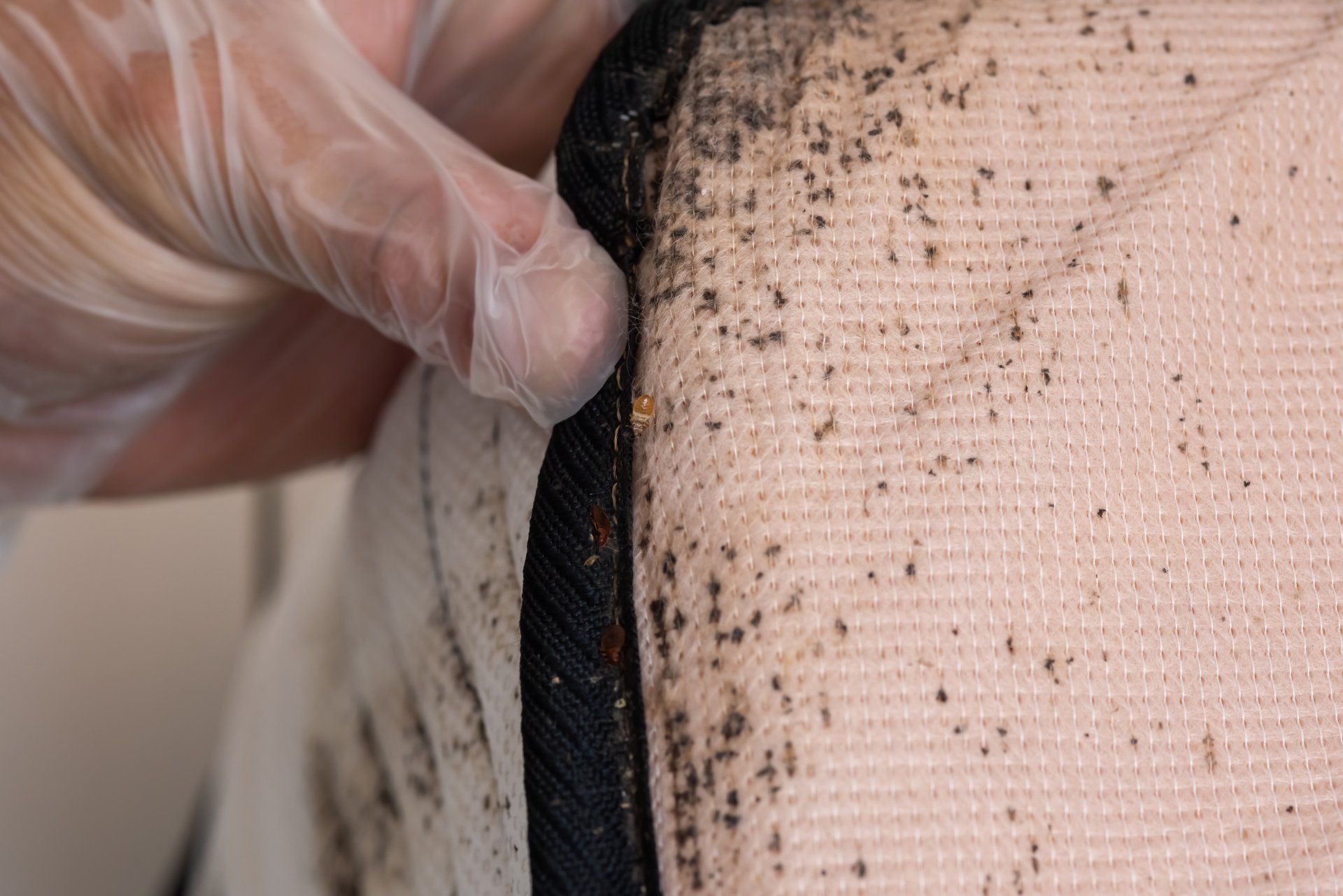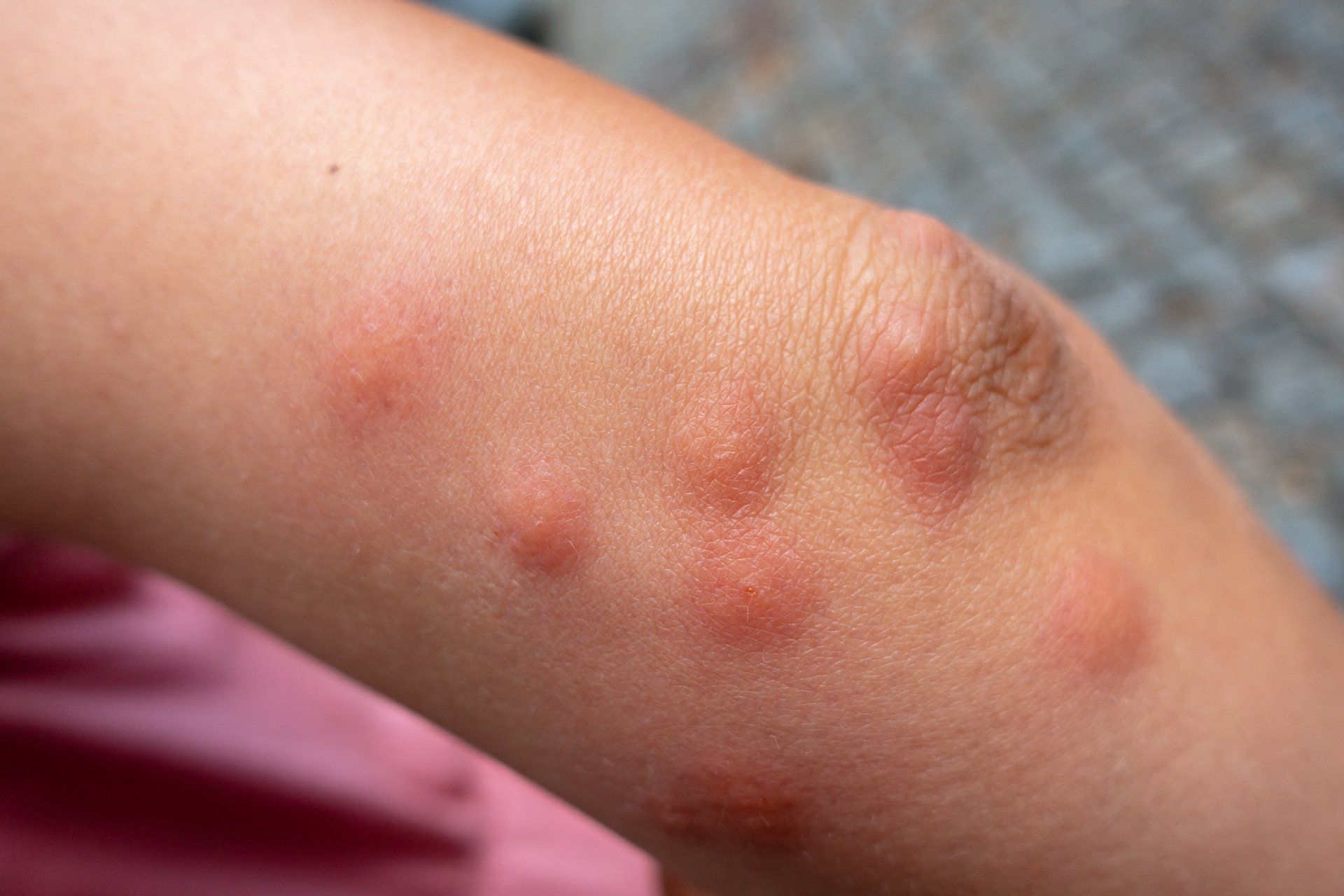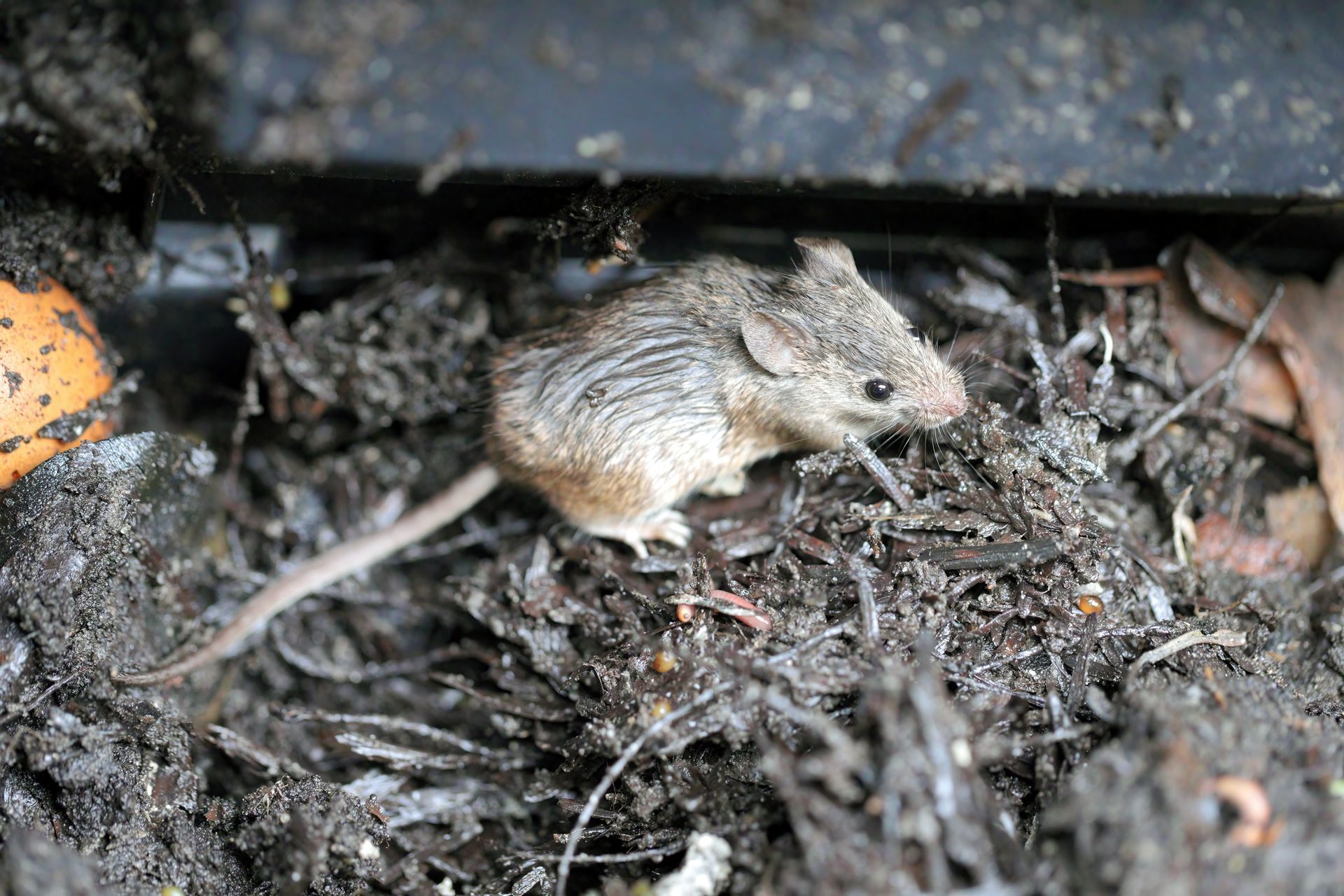What are Bed Bugs?

Bed bugs are parasitic insects that look for blood meals from humans and other warm-blooded animals while they sleep. They are found everywhere on this planet except for Antarctica and are associated with everywhere humans gather including hotels, motels, restaurants, places of work, schools, and public transportation. They get their name from taking residence in beds where their food sources remain undisturbed for several hours at a time. This allows them to feed freely at night on unsuspecting victims. They are extremely difficult to control given how resilient they are. These bugs have become increasingly resistant to pesticides and are known to survive without food for up to 400 days which makes hidden dormant bed bugs difficult to treat.
Bed Bug Appearance

Adult bed bugs are a flat, reddish brown, and wingless bug with an oval shaped body that is about the size of an apple seed. They become engorged with blood after they have their blood meal. Younger bed bugs vary depending on which stage of their life cycle they are in. Young bed bugs are also known as nymphs which are much smaller and lighter in color. They will move through 5 stages, molting each time before their final mature bed bug stage. Bed bug eggs are white and about the size of a pinhead which makes spotting them against a white mattress difficult.
How do you get bed bugs?
Bed bugs are found across the globe and have been a persistent pest all over the US. They have been found in places that experience high turnover like apartments, hotels, resorts, hostels, cruise ships, airplanes, and even public transportation like busses and taxis. If an individual comes into contact or stays at an infested area, there is a good chance that the bed bugs will find their way to latch on and catch a ride to their next destination. They normally spread this way and will hitchhike on unsuspecting humans via there clothes or luggage. There is also the possibility that they can catch rides on unsuspecting pets, wildlife, or birds which are then shed in or around your home.
Once they have found their way into your home, females can lay up to 5 eggs every day with nymphs being able to reach adulthood in 21 days. This means that the first 2-3 weeks of an bed bug infestation is the most critical time to discover bed bugs before populations explode.
Where do bed bugs hide?
Once bed bugs have found their way into your home, they will find sources of food by following the carbon released during respiration or by following the warmth created by our bodies. This will lead them towards your bed where they can hide in mattress seams, in your box spring, or in the cracks between your bed frame and headboard. Bed bugs are flat and can work their way into extremely thin cracks and crevices which is another reason these bugs are extremely difficult to treat.
When bed bugs are not feeding, they will hide just about anywhere they can remain undisturbed while they digest their last blood meal. They will congregate in large groups and their populations will continue to grow until the problem becomes noticeable. If populations become large enough, there is a possibility that they will expand their feeding territory and search for new sources of food. This can lead them into wall cavities and in the carpet as they pass from one room to another. They have also been found in places like:
- Seams and cushions of upholstered furniture
- Curtains, linens, and clothing
- Nightstands, dressers, and drawer joints
- Electronics and under light switch plates
- Cracks between wooden pieces of wood in furniture
- Carpeting around your bed and baseboards
- Recently used luggage, bags, and suitcases
- Screw holes
- Clutter under beds
- Behind wall mounted picture frames

Signs of bed bugs
Finding bed bugs early is critical to managing their populations because once they get out of control and spread to other areas, they are extremely difficult to exterminate. Treating smaller infestations will require much less stress and resources to completely eradicate because you won’t have to treat areas like inside of walls or other rooms. That said, finding an infestation in its infancy can be difficult to correctly identify because bed bug bites take a few days to start itching and they can also be mistaken for other bugs. Other signs like seeing eggs or molted skins are not apparent until it is too late. That said, the following indicators are all signs that a bed bug population might be growing under your nose:
- Small itchy welts
- Small reddish brown fecal spots on mattresses, bedding, or upholstery
- Molted skins
- Empty eggshells
- Live bed bugs caught in traps
- A sweet musty odor
When are bed bugs active
Bed bugs are active at night when they feed and are known to travel over 100 feet in one evening to reach their meal. This allows them to traverse large areas and spread throughout a home or business relatively quickly. That said, they generally live within 8 feet of their food source, so most bed bugs end up near your bed.
Are bed bugs a threat?
While bed bugs are thought to be a massive nuisance, they don’t pose much physical threat to humans even though bed bugs feed on people. This is done by piercing the skin and sucking up blood through their long beak. This generally lasts between 3-12 minutes before they are engorged with their blood meal. After this they will rest to digest their meal and either molt or reproduce. Their bites result in itchy welts but there hasn’t been a recorded transmission of a blood borne illness caused by bed bugs. That said, the toll they take is more associated with quality of life as they have been reported to cause stress, insomnia, and anxiety. The biggest physical threat caused by bed bugs is when those itchy welts are scratched enough to cause an infection.
Bed bug bites symptoms
Most bed bug bites are painless due to a substance that acts as an anesthetic but that that same secretion causes allergic reactions that turn into itchy welts. In some instances, there are cases of people who have no allergic reaction at all which leads to bed bug populations going undetected for a long enough period for massive infestations to break out. Then there is another small portion of people who will have an allergic reaction causing anaphylaxis. If a mild reaction occurs, then signs of bites in clusters or in a line around your face, neck, arms, and hands are usually indicators of bed bugs.

Bed bugs are probably the most difficult bug to eradicate so professional help is usually recommended. This is because bed bugs hide so well and can live for several months without a blood meal. In addition, bed bugs have become much more resistant to several chemical pesticides. Even if pesticides work, their size allows them to fit into just about anything which allows them to hide from chemical treatments. Outside of chemical treatments, there are nonchemical solutions that require vacuuming carpets, washing clothes and bedding, and temperature control to help mitigate growing bed bug populations. Bed bugs are sensitive to temperature and won’t be able to survive in temperatures above 122 degrees Fahrenheit. Heat control is an effective treatment option provided by pest control which guarantees the termination of bed bugs. This process may take a couple hours, but the heat will be able to permeate the walls and most furniture to ensure that all traces of bed bugs are eradicated.
Preventing bed bugs
Preventing bed bugs is an on-going battle that requires a high level of vigilance when coming into contact with public places that are frequented by lots of people. Checking for bed bugs anytime you sleep away from home is probably the best way to prevent most bed bug exposure. Inspect the bed sheets and mattress in hotel rooms for any signs of bed bug activity to see if there is an existing infestation that needs to be reported. Having a trash bag will create a protective barrier and having a place to elevate your luggage will minimize the possibility of bed bugs latching onto your luggage. Also be sure to vacuum luggage and wash all travel clothes with hot water to raise temperatures past bed bug’s heat threshold. This will exterminate any potential hitch hikers that made it past other preventative measures upon your return home.
Other steps that can help prevent bed bug populations:
- Not accepting secondhand furniture, toys, mattresses, and box springs
- Thoroughly cleaning all pre-owned items
- Eliminate areas that can harbor wildlife and birds around your home
- Standing on public transport when possible
If you suspect bed bugs have been introduced into your home, there are things that you can do to help prevent them from becoming a bigger nuisance. There are footer traps available that can be placed on the feet of your bed which prevents the bed bugs from crawling to the bed from the ground. There are also mattress covers that are designed to trap bed bugs in so they can’t feed. These covers should be left on for at least 18 months to ensure that the bed bugs are completely dead as they are known to survive without a blood meal for an extremely long time. In addition to using the tools above, you can also:
- Move your bed away from walls and other furniture
- Seal cracks and crevices between rooms and apartments
- Steam areas thought to harbor bed bugs
What landlords need to know
While bed bugs don’t pose much physical threat to most people, they pose a massive financial threat to landlords. This is because in most tenant friendly states, bed bugs fall under the landlord’s responsibility of providing a habitable place to live. This is even more difficult to maintain when you account for multifamily properties that share walls like apartments, condos, and town houses. Since bed bugs can escape treatment by fleeing into other rooms in a building, landlords must take extra precautions to isolate and exterminate bed bugs before they spread. A few other tips for landlords when dealing with or trying to prevent bed bugs include:
- Determine what the laws say you are required to do before, during, and after treatment
- Educate yourself and staff to identify signs of bed bugs at the earliest stage possible
- Educate tenants on what to before and during their stay to minimize the possibility that they introduce bed bugs
- Respond to the discovery of bed bugs promptly
- Outline the duties of tenant to ensure proper protocol and cooperation is achieved
- Inspect adjacent units after treatment
- Actively monitor for signs of remaining bed bugs until a period of a few months goes by without instance
- Strategically place bed bug traps to catch bed bugs early

















